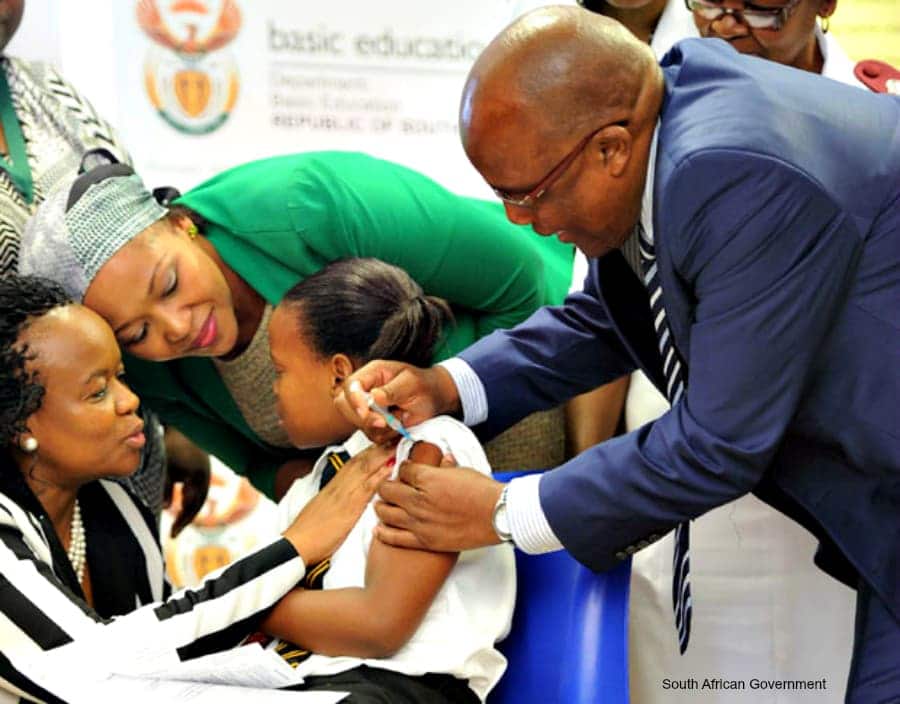HIV rate stable in teens but increasing among older women
But the biggest increases in HIV are among pregnant women aged 35 to 39, and those living in North West.
This is according to the annual HIV and syphilis prevalence survey for 2005, which was quietly put up on the Department of Health’s website yesterday (Friday 21 July).
Almost one in three (30.2%) of the 16 510 pregnant women tested across the country last year were HIV positive.
But this was an increase of less than a percent over the previous year, prompting hope that the epidemic is stablising.
KwaZulu-Natal (39.1%), Mpumalanga (34.8%) and Gauteng (32.4%) are the three worst affected provinces.
The Western Cape (15.7%) remains the province with the lowest HIV rate.
North West had highest HIV increase, where the infection rate jumped by 5% to almost 30%. This was followed by Mpumalanga, with a 2% increase.
However, HIV rates in Gauteng and KwaZulu-Natal decreased very slightly.
Young women aged between 25 and 29 are worst affected by HIV, with almost four in ten (39.5%) women in this age group living with the virus. However, this figure was virtually unchanged from 2004.
Women aged between 35 and 39 showed the biggest increase in HIV prevalence, jumping almost 4% from 24.5% to 28%.
There were also increases of 2% in both women aged 30 to 34 and women over the age of 40.
However, the HIV rate among teens decreased slightly. While the survey notes that this decrease was ‘not statistically significant’, it added that it ‘may be an indicator of declines in this age group’.
HIV prevalence among young women under the age of 24 has remained constant over the past three years, giving hope that the HIV epidemic among young people is stabilising.
‘The prevalence profile continues to confirm the expectation and projections of numerous groups whose models suggest that South Africa will begin to see a decline in HIV prevalence,’ said health department spokesperson Sibane Mngadi.
The department uses the antenatal estimates to make projections about the HIV rate of the general population.
Based on the latest figure, close on one-fifth (18.8%) of South Africans between the ages of 15 and 49 are estimated to be living with HIV, according to the health department.
Some 235 000 children are estimated to be HIV positive, part of the total HIV positive population of 5.54 million.
Meanwhile, there has also been an increase in syphilis from 1.6% to 2.7%. This potentially life-threatening, but easily treatable sexually transmitted infection, is most prevalent in the Northern Cape (8.5%).
Gauteng and the Western Cape also have relatively high syphilis rates, while Limpopo and KZN have the lowest rates.
Author

Kerry Cullinan is the Managing Editor at Health-e News Service. Follow her on Twitter @kerrycullinan11
Republish this article
This work is licensed under a Creative Commons Attribution-NoDerivatives 4.0 International License.
Unless otherwise noted, you can republish our articles for free under a Creative Commons license. Here’s what you need to know:
You have to credit Health-e News. In the byline, we prefer “Author Name, Publication.” At the top of the text of your story, include a line that reads: “This story was originally published by Health-e News.” You must link the word “Health-e News” to the original URL of the story.
You must include all of the links from our story, including our newsletter sign up link.
If you use canonical metadata, please use the Health-e News URL. For more information about canonical metadata, click here.
You can’t edit our material, except to reflect relative changes in time, location and editorial style. (For example, “yesterday” can be changed to “last week”)
You have no rights to sell, license, syndicate, or otherwise represent yourself as the authorized owner of our material to any third parties. This means that you cannot actively publish or submit our work for syndication to third party platforms or apps like Apple News or Google News. Health-e News understands that publishers cannot fully control when certain third parties automatically summarise or crawl content from publishers’ own sites.
You can’t republish our material wholesale, or automatically; you need to select stories to be republished individually.
If you share republished stories on social media, we’d appreciate being tagged in your posts. You can find us on Twitter @HealthENews, Instagram @healthenews, and Facebook Health-e News Service.
You can grab HTML code for our stories easily. Click on the Creative Commons logo on our stories. You’ll find it with the other share buttons.
If you have any other questions, contact info@health-e.org.za.
HIV rate stable in teens but increasing among older women
by Kerry Cullinan, Health-e News
July 21, 2006



